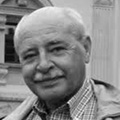
BRUKER DALTONICS

Date: Monday August 27th from 12.30 p.m. to 1.45 p.m.
Room 1 - Ground Floor at Spadolini Pavilion
Title: - Making biomarkers relevant with High Performance MALDI Imaging
Registration link: https://www.bruker.com/events/2018/mass-spectrometry/imsc-2018.html
Bruker Lunch Symposium, Monday August 27th, 12.30-1.45 pm:
“Making biomarkers relevant with High Performance MALDI Imaging”
- Lab-on-a-tissue: optimizing on-tissue chemistry for improved mass spectrometry imaging
Bram Heijs, Center for Proteomics & Metabolomics, Leiden University Medical Center, Leiden, The Netherlands
Matrix-assisted laser desorption/ionization mass spectrometry imaging (MALDI-MSI) is an analytical technique that allows the visualization of 100-1000's biomolecules directly from tissue sections. Often applied in clinical research, samples are often limited and precious. Robust and novel methodologies are required to extract as much molecular information from the tissues as possible in order to gain insight in the molecular background of disease. In the presented work, the combination of on-tissue (enzyme) chemistry and high resolution MALDI-MSI is displayed in order to obtain more in-depth access to specific analytes or obtain sequential access to multiple analyte classes from the same tissue section. - MALDI MS imaging in pharmaceutical research - multimodal imaging on the horizon?
Carsten Hopf, Ph.D., Center for biomedical mass spectrometry and optical spectroscopy (CeMOS), Mannheim AS University
MALDI MS imaging (MSI) has emerged as a versatile label-free technology that supports decision-making at various steps in the drug discovery process. The talk will present use cases for fast MALDI-TOF and ultra-high resolution MALDI-FTICR mass spectrometry in pharmaceutical studies of disposition of drugs, their metabolites and drug formulations as well as in investigations of drug action.
To reduce data acquisition time and data load in MALDI-FTICR MS imaging, we have recently introduced the new concept of Fourier Transform infrared (FTIR) microscopy-guided MS imaging. Here, tissue sections are first scanned by an FTIR microscope and computationally segmented, before MSI is carried out only on few selected segments such as hippocampus in the brain. Time savings of up to 90% by FTIR-guided MSI enable routine use of ultra-high resolution FTICR-based MSI methods in pharmaceutical research.
Date:Tuesday August 28th from 12.30 p.m. to 1.45 p.m.
Room 1 - Ground Floor at Spadolini Pavilion
Title: - Digging Deeper Into the Proteome With Record-breaking Speed, Sensitivity and Robustness
Contact person:anne.kropp-schnisa@bruker.com
Room 1 - Ground Floor at Spadolini Pavilion
Title: - Digging Deeper Into the Proteome With Record-breaking Speed, Sensitivity and Robustness
Contact person:anne.kropp-schnisa@bruker.com
Registration link: https://www.bruker.com/events/2018/mass-spectrometry/imsc-2018.html
Bruker Lunch Symposium, Tuesday August 28th, 12.30-1.45 pm:
“Digging Deeper Into the Proteome With Record-breaking Speed, Sensitivity and Robustness”
- „timsTOF Pro and PASEF: Multiplying sequencing speed and sensitivity in mass spectrometry-based proteomics“
Andreas-David Brunner, PhD, MPI for Biochemistry, Martinsried, Germany
Applications of proteomics technologies to basic and biomedical research require further developments of mass spectrometry technology to overcome long-standing limitations in speed, sensitivity, and robustness. Trapped ion-mobility spectrometry coupled to a quadrupole time-of-flight analyzer in combination with the ‘Parallel Accumulation followed by Serial Fragmentation’ scan-mode has shown much promise in this regard. We show that this setup allows the identification of >2.500 and quantification of >2.400 protein groups from only 10 ng HeLa digest within 30 min in single-shot experiments and the MaxQuant environment. In 120 min runs we identify >6.000 and quantify >5.900 protein groups from only 200 ng HeLa digest. - The second speaker is to be defined. We will inform you asap as soon as we have further details!































































































































